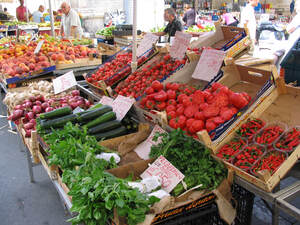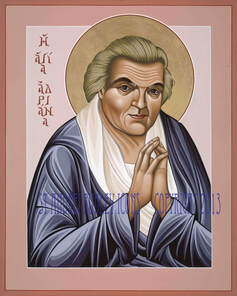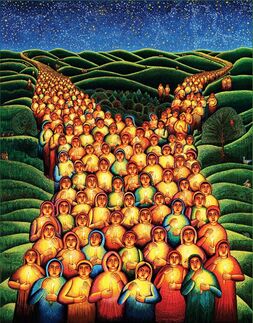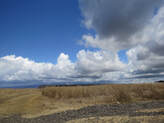 the bounty of the land the bounty of the land Marking important events with a celebration such as anniversaries and jubilees is a custom that many people enjoy. This practice has been part of every culture for millennia, including that of our faith communities. Scripture describes occasions that held special meaning, some prescribed by God and some which were a result of the people’s history. In the Old Testament (Leviticus 25:8-55) we read about the Jubilee years required by God. These years were considered as ‘hallowed’ (holy) and they originally involved releasing those in one’s service, returning to one’s family, returning land to its original owners, and resting from sowing or reaping. Jubilee was marked by special worship throughout the year to express gratitude to God for His many gifts, particularly the bounty of the land. While Jubilee years are celebrated quite differently today, it continues to be tradition in the Church to celebrate a Jubilee year periodically; the next one is in 2025. To prepare for it, Pope Francis has designated 2024 as a Year of Prayer, no doubt to encourage us to become more attuned to our relationship with God, to listen with greater expectation, and to open our hearts to greater love.  our relationhsip with God is the most important relationship we have our relationhsip with God is the most important relationship we have Prayer ought to be a part of our daily lives since our relationship with God is the most important relationship we have. However, there are times when prayer can become difficult insofar as our emotions, thoughts, and even our physical state might act as a source of distraction. Often we struggle to focus because we have many concerns that command our attention, but whatever it is, we must take care to avoid falling into the temptation of thinking that somehow we are a failure at prayer and give up altogether. Let me state this plainly: there is no such thing as a failure at prayer. Any attempt at spending time with God is good prayer. However, what can be an issue for many is how we prioritize prayer in the first place. Quite often we relegate it to a back seat because we think there are many other things that just have to be done. These things probably are important, but for perspective, a challenging, although imperative question to ask ourselves is whether we consider our daily life (and its commitments) a distraction to our prayer, or if we consider prayer a distraction to our daily life. If in honesty we realize it is the latter, this Year of Prayer can offer the opportunity to straighten our priorities and put God back where our hearts really do long for Him to be.  Speak, your servant is listening Speak, your servant is listening If we look to Scripture we will see that God always initiates the invitation for people to meet Him in prayer. A good example is that of the call of Samuel. Twice when God called out, “Samuel, Samuel!” he replied, “Here I am,” and thinking it was Eli who had called, he dutifully ran to his side. When this occurred a third time, Eli realized that it was God calling the boy and so he told Samuel that if he heard the voice again to say, “Speak, Lord, your servant is listening.” (1 Samuel 3:1-4) When God called yet again, Samuel was able to respond, becoming attentive and open to the message of the Lord. Not knowing better at the time, initially Samuel had misguided his response, but once he became aware it was God who called, he was able to communicate directly with Him, enabling him to become a great prophet in the service of God. *  He does call to our heart He does call to our heart Like Samuel, we need to make a similar response to God. Even though it is unlikely that we will hear God’s voice with our ears, He does call to our heart. When we respond, we consciously and intentionally enter into His presence where we will come to know Him more intimately, also receiving the graces He offers to help with handling the many challenges of daily life. Many of the Saints related their insights into the importance of prayer; St. Pope John XXIII expressed it beautifully when he explained why he arose daily at 4:30 AM to pray when he had such full, difficult days. His stated that without this prayer time, it would be impossible for him to handle his packed schedule. He said that the busier he was, the more he needed the prayer. And St. Padre Pio once advised one of his spiritual daughters saying, “You should never give your spirit to your work or to other actions so intensely that you end up losing the presence of God.” ** Both of these saints offer reminders that we need to be regular in our prayer so that our focus is on God who will give all we need to help us remain strong. And what a gift it is that every day our dearest, most faithful Friend, the one who knows us best and loves us the most, is waiting to spend time with us.  our hearts should celebrate our hearts should celebrate This year is an excellent time to prepare ourselves for the Jubilee Year of 2025. The emphasis on prayer offers an opportunity to deepen our relationship with the Lord, no matter what our habits may be presently. It can help with our identity as a community when we come together as one to worship, and it can enliven our works of mercy. Clearly, what we attend to now can become more than just a lifelong ‘habit:’ it can open us to a more intimate relationship with God that will come to complete fruition when we meet Him face to face in Heaven one day. Indeed, our hearts should celebrate. May we commit to a deeper, more intimate life of prayer! May we come to recognize the ‘voice’ of the Lord and respond to Him! May we come to know the love of the Lord more fully! And may we, filled with the graces received in prayer, grow in holiness as a response of love to the Lord! Let us meet in the Heart of Jesus! Peace! ©Michele L. Catanese * Other examples of God calling, a response being made, and God giving a mission: When He commanded Abraham to take Isaac up the mountain for sacrifice God called out, “Abraham!” and Abraham replied, “Here am I.” (Genesis 22:1) Later, when God came to Jacob in a dream He called, “Jacob!” Jacob replied, “Here I am!” (Genesis 31:11). In the Book of Exodus God called out from the burning bush, “Moses, Moses!” and Moses replied, “Here am I.” (Exodus 3:4) This ‘formula’ also appears in the New Testament when Ananias was by God sent to baptize Paul. God called, “’Ananias!’ And he said, ‘Here I am, Lord.’” (Acts 9:10) **From a letter of St. Padre Pio to Raffaelina Cerase, one of his spiritual daughters, December 17th, 1914. Images: 1. Photo taken by my husband; the bounty of the land found in an open air market in Catania, Sicily, Italy. 2. Icon; The Servant of God, Adrienne von Speyr by Fr. William Hart McNichols. Adrienne was a Swiss mystic. One of her books is called The World of Prayer. Another of her books was the result of mystical prayer during which she dictated what she witnessed to her spiritual director, the great theologian Hans Urs von Balthasar. This book is called The Book of All Saints. You can find this icon at https://fineartamerica.com/featured/the-servant-of-god-adrienne-von-speyr-068-william-hart-mcnichols.html 3. Painting; The Voice of the Lord, by James Tissot. This painting depicts young Samuel after he said, "Speak, your servant is listening." 4. My photo; the mountains, taken from around Silverthorne, Colorado. 5. Painting; Festival of Lights, by John Swanson. (1938-2021) Note: In compliance with GDPR rules, I wish to make it clear that I do not gather any information on any of my readers at any time.
Marsha A Smith
1/23/2024 04:52:16 pm
Thank for this message, how beautiful to begin the year together in this preparation prayer. Comments are closed.
|
Heart Speaks to Heart
|

 RSS Feed
RSS Feed

